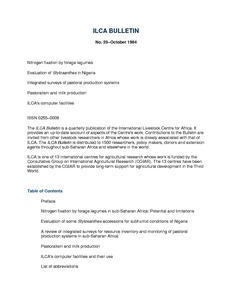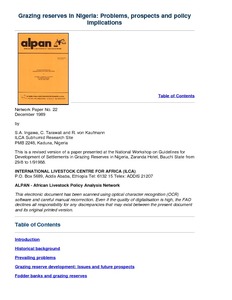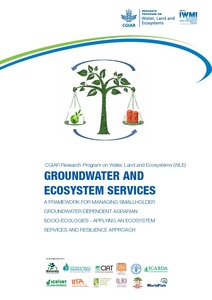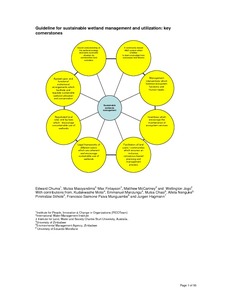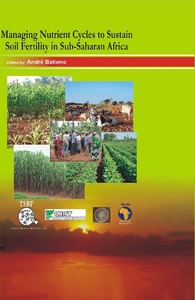parcours
AGROVOC URI:
Identifying local innovations in pastoral areas in Marsabit County, Kenya
ILCA 1990: Annual report and programme highlights
Presents ILCA's achievements in 1990 in a popular, easily read style. The Cattle Milk and Meat Thrust highlight focusses on peri-urban dairying, and particularly the work of collaborative programme with KARI. The highlights of the Small Ruminant Meat and Milk Thrust are linked by their focus on interactions between animals and other components of the agricultural system. The Animal Traction Thrust highlights focus on two themes central to the Thrust's work: feeding and alternative sources of draft power.
Grasslands, cattle and land use in the neotropics and subtropics
The paper reviews trends in land use change in the tropics and subtropics of Latin America and the Caribbean, and their relation to the evolution of the cattle industry in the region. It is posited that horizontal expansion is nearly finished, and that cattle sector, and the grasslands that support it, are beginning to intensify. Nevertheless a number of paradoxes subsist and are discussed. Most notable among these are the interactions among land speculation, a characteristic aspect of much of the extensive cattle industry throughout history, with policies and technologies.
Groundnut production in Malawi: The cash 'cow' and butter that nourishes families
Grazing reserves in Nigeria: Problems, prospects and policy implication
Grazing reserves in Nigeria are areas set aside for the use of pastoralists and are intended to be the foci of livestock development. The stated purpose of grazing reserves is the settlement of nomadic pastoralists they offer security of tenure as an inducement to sedentarization through the provision of land for grazing and permanent water. This paper reviews problems associated with grazing reserves and offers suggestions to make them more productive and relevant to the needs of the intended beneficiaries.




